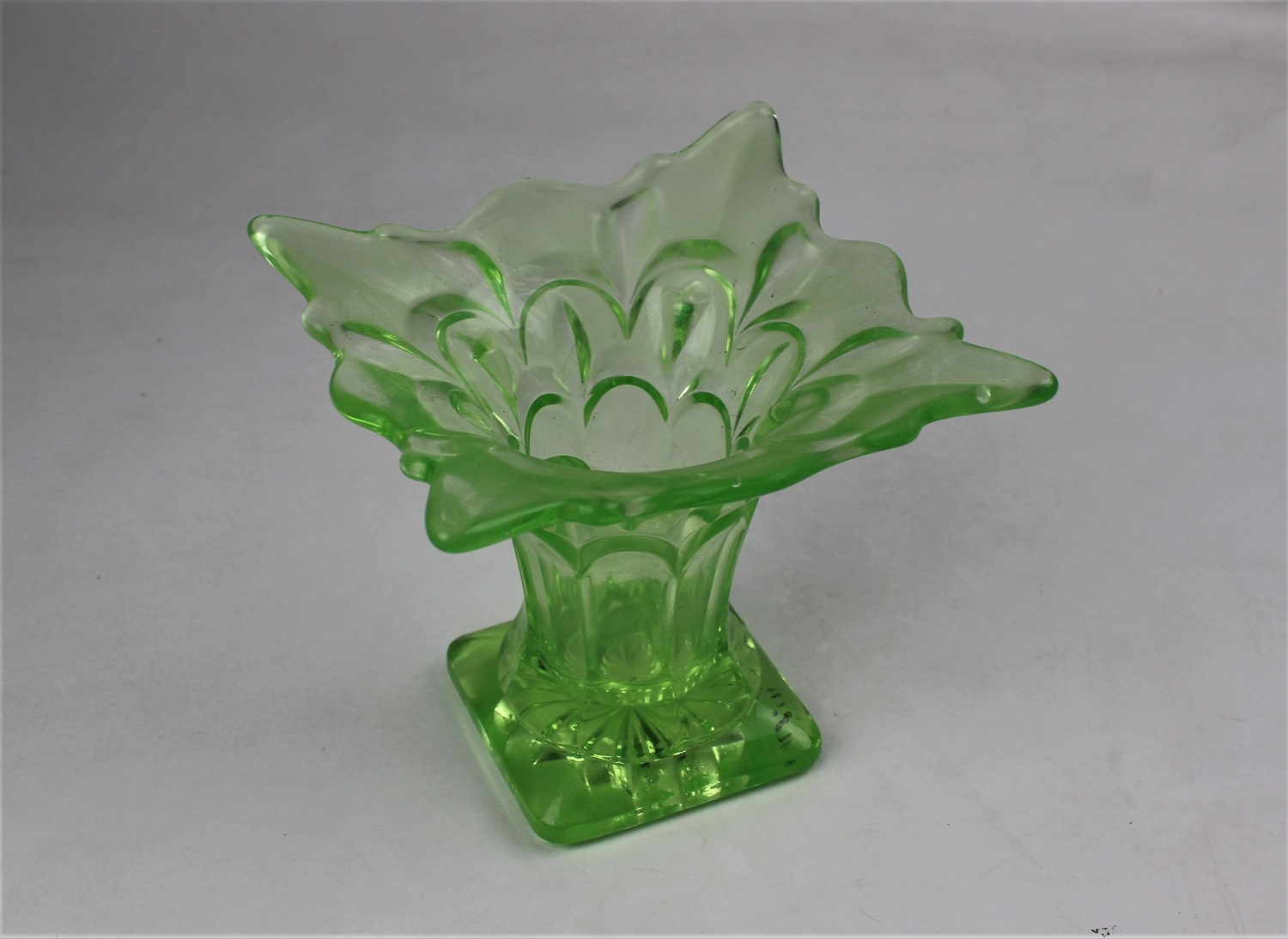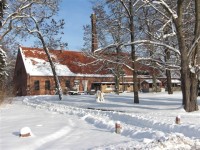Glasvase, urangrün, gepresst, Deutschland um 1930, art déco
Entwurf Objekttext in der Sonderausstellung "Glas und europäisches Kulturerbe".
Die industrielle Produktion von Uran wurde dann von Franz Riedels Neffen und Schwiegersohn Joseph Riedle in Klein Iser aufgenommen. Aus Uran wurden bis in die Mitte des 20. Jahrhunderts Ziergläser und verschiedene Gebrauchsgegenstände wie Trinkgläser, Vasen, Schalen, Toilettengarnituren und Bijouterie hergestellt. Uranglas der Antike, da in Mosaiken gefunden wurde, hat nur einen sehr niedrigen Urangehalt. Da Uran erst Ende des 18. Jahrhunderts dargestellt worden ist, ist die Verwendung von Uranmineralien als Farbstoff in antiken Glassätzen wohl eher zufällig.
Glas und europäisches Kulturerbe, 8.7.2018 ff., Abschnitt: Uran
en

